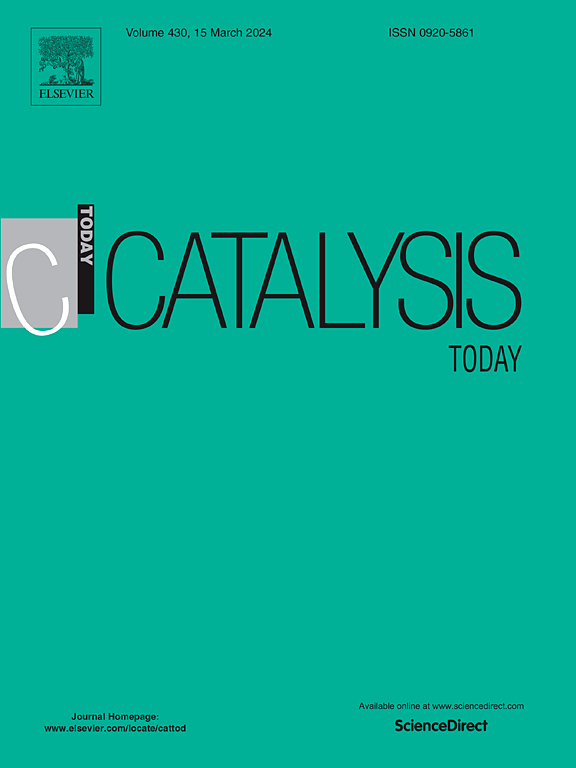1-丁醇在Mg和li掺杂l型沸石上的C-C偶联
IF 5.3
2区 化学
Q1 CHEMISTRY, APPLIED
引用次数: 0
摘要
在化学技术中,碳-碳键的形成近年来变得越来越重要。在这项工作中,我们研究了l -沸石在常压和400 °C下作为1-丁醇气相Guerbet偶联的催化剂载体。采用初湿浸渍法合成了低负荷单金属(Mg和Li)催化剂,并通过N2和Ar吸附-解吸等温线、XRD、FT-IR、NH3和CO2的程序升温解吸、29Si和27Al的MAS NMR和XPS对其理化性质进行了表征。XRD和FTIR结果表明,掺杂沸石的晶体结构没有明显变化。Mg和Li浸渍使沸石的比表面积减小,微孔体积明显减小,但结晶度保持不变。29Si MAS NMR表明,催化剂浸渍过程中发生了一定程度的脱硅,导致介孔的形成。Li/L催化剂由于表面存在Li- o对而表现出更多中等强度的碱性位点,这与介孔效应共同促进了C-C偶联对1-丁醇的转化。Li/L催化剂对C8氧合产物的选择性优于参考醛醇缩合催化剂。本文章由计算机程序翻译,如有差异,请以英文原文为准。
C-C coupling of 1-butanol over Mg- and Li-doped L-zeolite
In chemical technologies, the formation of carbon-carbon bonds has gained an increasing importance in recent years. In this work, we studied L-zeolite as a catalyst support for the gas-phase Guerbet coupling of 1-butanol at atmospheric pressure and 400 °C. Low-loaded monometallic (Mg and Li) catalysts were synthesized by incipient wetness impregnation and their physicochemical properties were characterized by N2 and Ar adsorption-desorption isotherms, XRD, FT-IR, temperature-programmed desorption of NH3 and CO2, 29Si and 27Al MAS NMR, and XPS. XRD and FTIR results showed no major change in the crystal structure of the doped zeolite. Impregnation of the zeolite by Mg and Li decreased the surface area and significantly reduced the micropore volume, but crystallinity was preserved. 29Si MAS NMR indicated that desilication had occurred to some extent during catalyst impregnation, which led to the formation of mesopores. The Li/L catalyst showed more basic sites of intermediate strength due to surface Li-O pairs on the surface, which, together with mesoporosity, contribute to enhancing 1-butanol conversion by C-C coupling. The Li/L catalyst was more selective to C8 oxygenate products than the reference aldol condensation catalyst.
求助全文
通过发布文献求助,成功后即可免费获取论文全文。
去求助
来源期刊

Catalysis Today
化学-工程:化工
CiteScore
11.50
自引率
3.80%
发文量
573
审稿时长
2.9 months
期刊介绍:
Catalysis Today focuses on the rapid publication of original invited papers devoted to currently important topics in catalysis and related subjects. The journal only publishes special issues (Proposing a Catalysis Today Special Issue), each of which is supervised by Guest Editors who recruit individual papers and oversee the peer review process. Catalysis Today offers researchers in the field of catalysis in-depth overviews of topical issues.
Both fundamental and applied aspects of catalysis are covered. Subjects such as catalysis of immobilized organometallic and biocatalytic systems are welcome. Subjects related to catalysis such as experimental techniques, adsorption, process technology, synthesis, in situ characterization, computational, theoretical modeling, imaging and others are included if there is a clear relationship to catalysis.
 求助内容:
求助内容: 应助结果提醒方式:
应助结果提醒方式:


